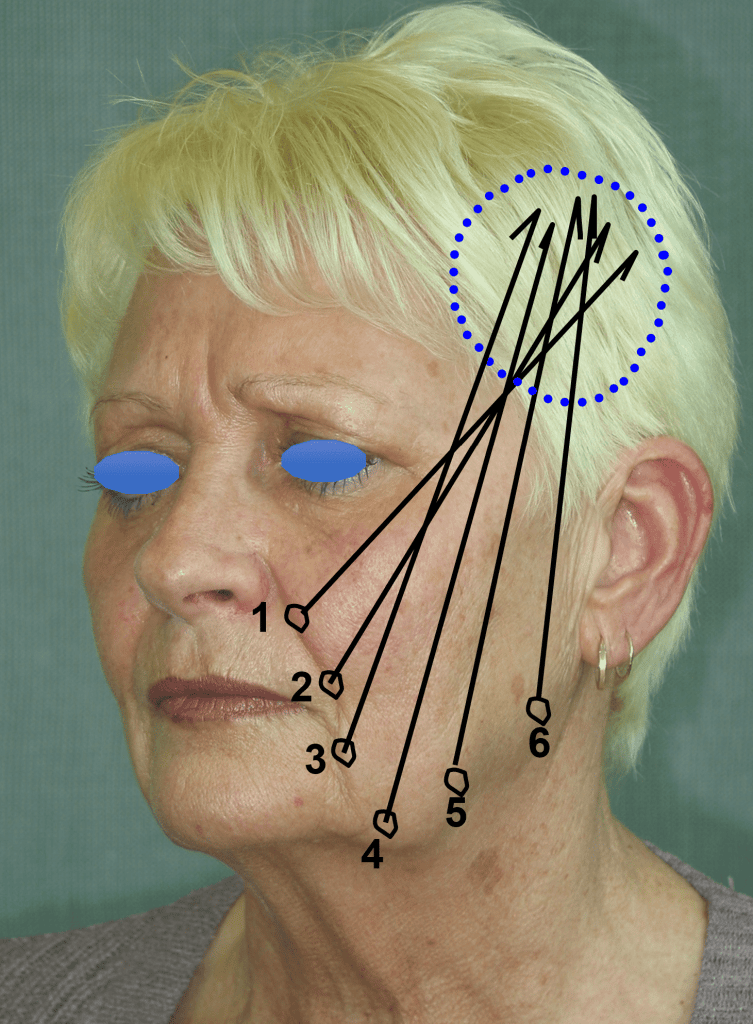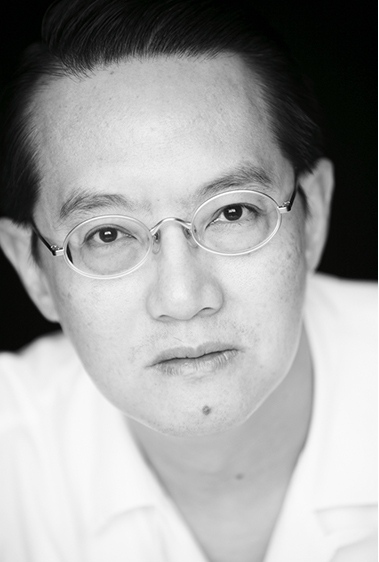The use of barbed sutures technology is not new. Alcamo first conceptualized it for wound closure it in 1964 and this was followed by Fukuda, Buncke and Ruff who designed mono directional and bidirectional barbed threads for similar reconstructive uses such as wound closure and tendon repair. It was Sulamanidze in 2000 who first popularized the use of barbed sutures for cosmetic applications in the face with his APTOS technique.
Wu conceived a barbed suture sling in 2002, combining the properties of a suture suspension sling with the self retaining properties of the barbed threads and clinical application of the WOFFLES THREAD commenced from late 2002. This was called the WOFFLES LIFT. The concept of application is completely different from that of the APTOS threads.
The Woffles Lift is essentially a non-surgical facelift using barbed self retaining SLINGS (WOFFLES THREADS) inserted via a needle introducer to resuspend saggy facial tissue to the dense tissue of the scalp. The Woffles Lift is not an APTOS procedure. The WOFFLES LIFT aims to challenge the way we think, and revaluate our concepts of face lifting mechanics and facelift surgery.
- The WOFFLES LIFT is done without de-lamination of facial soft tissue and without the disturbance of any anatomical relationship of skin, muscles, nerves, and vessels,
- It is a fast procedure and can be performed under 20 minutes.
- does not require GA, can be performed under LA without sedation.
- It has minimal down time and minimal complications
- Complications are easily resolved
The WOFFLES THREAD is 40-60 cm in length. It is a bi-directional barbed suture sling with a clear/ smooth zone (non barbed area) at the mid point of the thread that allows it to be folded into a sling.
IF we use a Normal prolene suture as a sling, the greatest tension of the suture is at the anchor points/load bearing areas, with no load bearing from the tissue between these two points. This leads to cheese cutting of the thread through the soft tissue and eventually the loss of a lifting effect. The Woffles Thread with the self retaining barbs has load bearing throughout the suture due to the multiple barbs, and thus there is a more even distribution of tension on tissue with less cheese cutting.
Woffles Threads are used in a variety of patterns for facial suspension:
- brow suspension
- lateral canthus suspension
- suspension of malar mound
- jowls
- mid face suspension,
- temporal suspension
- neck tightening/ lift
Firstly, not all patients are candidates for this lift. Patients with severe facial and neck laxity would be better off having a traditional open rhytidectomy where skin can be removed.
Patients looking for the longevity of a traditional facelift will also be disappointed with its short to mid-term longevity. It is all about expectations.
With the patient in a sitting position, assess the degree of facial laxity by pushing the facial tissues upwards to the temples using one’s fingers. This allows us to determine how much restoration of midface volume can be achieved, and how much bunching or pleating of skin there will be at the anterior hairline. It is important to determine whether this elevation will be accompanied by significant lateral canthal elevation and whether the patient likes this effect.
…are those who:
- do not wish to have a surgical facelift and the downtime and complications associated with that,
- have already had one or several facelifts and have residual laxity for which they do not want to undergo surgery again,
- are already using BOTOX and fillers and are familiar and comfortable with the concept of their use, their temporary nature and the need to come back after set intervals to be re injected,
- want a quick result, to be able to re-integrate quickly with social life/activities,
- do not mind coming back every 1-2 years to supplement the threads already existing and to ‘repull’ the face,
- are elderly and who may not be candidates for a long surgical procedure,
- are keloid prone,
THERE are six key suspension points/vectors that are identified for the midface and jowls:
- Upper Nasolabial
- Lower Nasolabial
- Marionette
- Anterior jowls
- Posterior jowls
- Mandibular angle
These are marked onto the face and then vectors of suspension are drawn from these points to the temple. These vectors are the guides for insertion of the needle introducers.

For the forehead, the vectors are determined by the shape and height of the eyebrow desired.
For the necklift, a horizontal marking is made at the cervicomental angle in the midline. A line is drawn from this point under the jawline, to the mastoid region. This is the vector of insertion of the needle introducer for elevation of the neck.
The procedure is done with patient sitting in an upright position. Operating Table/ bed needs to be at 90 degrees.
Assistant/ Nurse prepares patient by combing and tying the hair out of the way of thread’s exit points.
Patient is then cleansed and draped
- Introducer (18G spinal needle) enters from point A upwards ( from the jowls, through the SMAS and the malar mound) and exits at point B( dense temporal fascia ), a BLADE 11 is used to make a stab incision at point B. The stillete of the introducer is removed and one Woffles thread is inserted from point B until the mid-point of the thread (non barbed area/smooth clear zone) is seen at point B. The introducer is removed.
- jowl which is another of the key suspension points. The end of the introducer will again exit at point B. the stillete is once again removed and the other half of the WOFFLES thread is inserted into point B till it exits at point C. The thread ends are shortened. The same process is repeated for the different vectors. Once all threads are inserted, the doctor then holds on to the ends of the threads whilst gently sweeping/ massaging the tissue into threads in a vertical direction.
- The ends of the threads are cut flush to the skin and the stab incision site (at the scalp) is closed with 6/0 Ethilon or 6/0 Catgut, and Bactroban (mupirocin 2%) ointment is applied to the wound.
Recovery time for the Woffles Lift is 2-3 days. Slight bruising can happen, but is usually easily concealed with make up or restyling of the patient’s hair. Patients are discharged with painkillers/ and oral antibiotics for three days. Necklift (3 days to 1 week) tend to have a higher tendency to bruise than mid face lift
Patients are advised not to have extreme facial expression or animation. Patients are informed that they can feel a bit of tension at the scalp for about a week,
- Entrapment of hairs
- Granuloma
- Thread extrusion
- Dimpling
- Pleating of the skin
All these complications are easily corrected.
Patients are informed that the lift lasts from 2-4 years and that they will need addition of threads periodically. We have patient swhose results have lasted 9 years
Barbed sutures can create a facelifting effect. Better technology and understanding of the causes of loss of longevity or relapse will lead to better and longer lasting results.


